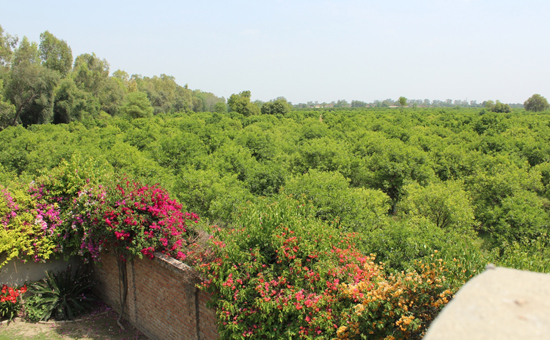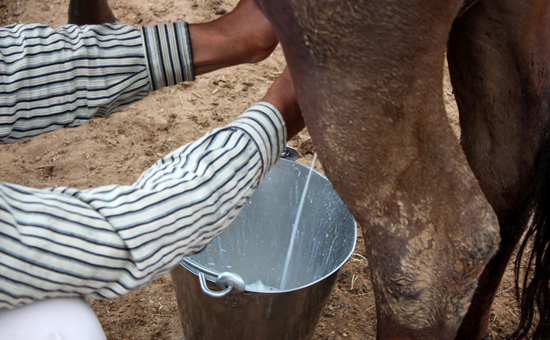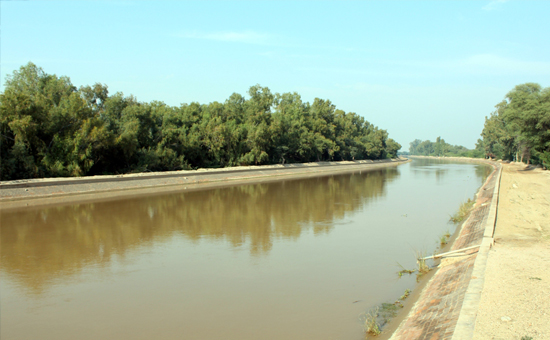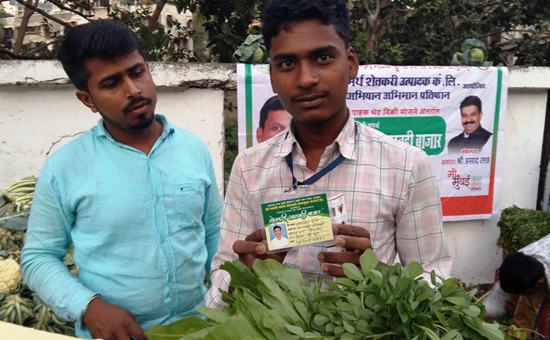- Over a lakh farmers protested in Delhi recently. Why did farmers visit the national capital because solutions to farm distress predominantly lies within the domain of state governments? For each factor that contributes to farm distress this article tells which government is responsible. Then it outlines ten reforms/ideas without which resolution to farm distress is a dream.
At a time when farmer’s woes occupy prime time we must have clarity on which government, State or Centre, is responsible.
But first what does the Constitution say?
Under The Seventh Schedule – State List (Article 246) state governments are responsible for ‘Agriculture, including agricultural education & research, protection against pests and prevention of plant diseases’ (no 14), ‘Water, that is to say, water supplies, irrigation and canals, drainage and embankments, water storage and water power to subject to the provision of entry 56 in List I’, (no 17), ‘Land, that is to say, right in or over land, land tenures including the relation of landlord and tenant, and the collection of rents, transfer and alienation of agricultural land; land improvement and agricultural loans; colonization’ (no 18), ‘Money-lending and money-lenders; relief of agricultural indebtedness’ (no 30), ‘Land revenue, including the assessment & collection of revenue, the maintenance of land records, survey for revenue purposes and records of rights, and alienation of revenues’ (no 45), Taxes on agricultural income’ (no 46), ‘Duties in respect of agricultural land’ (no 47), ‘Taxes on entry of goods into a local area for consumption, use or sale therein’ (no 52).
Arising from the above State governments can levy taxes on agricultural income and are responsible for –
1. Agriculture that includes education & research, monitoring use of pesticides, increase in productivity through introduction of new technology, ascertaining quality of soil etc.
2. Water that includes construction of canals, improving irrigation facilities, water conservation - building of check dams, increasing groundwater levels.
3. Land includes maintenance of land title records, acquisition of land, lease of agricultural land etc.
4. Creation of and management of Agricultural Produce Market Committees (APMCs).
Shruti
Rajagopalan wrote in MINT, “The APMC by dividing the market geographically into different regions and insisting that a farmer can only sell to the mandi in his region. This prevents consumers, wholesale and retail food companies from buying directly from the farmer.”
5 Providing relief to indebted farmers by way of waivers.
Since
State Electricity Boards are managed by state governments pricing of power is
decided by them. Fertiliser pricing is decided by and subsidy borne by the
Central government.
The Central government has a MSP or minimum support price program for wheat and rice. That is however, “heavily concentrated in Punjab and Haryana; as well as the southeastern Andhra Pradesh”. It also decides
import-export policy. Typically when domestic prices rise imports are resorted
to ensure lower end consumer price.
This
table has a summary of responsibilities broken up under simple headings.
Factors affecting Farm Output: Responsibility Table
|
Sr No
|
Factor
|
State G
|
Central G
|
|
1
|
Building of Irrigation Canals
|
Yes
|
No
|
|
2
|
Water Conservation
|
Yes
|
No
|
|
3
|
Promotion of Drip Irrigation
|
Yes
|
No
|
|
4
|
Providing Electricity
|
Yes
|
No
|
|
5
|
Introduction of new technology
|
Yes
|
Yes
|
|
6
|
Maintenance of Land Title Records
|
Yes
|
No
|
|
7
|
Land Leasing Law
|
Yes
|
No
|
|
8
|
Rules for Contract Farming
|
Yes
|
No
|
|
9
|
Markets in which farmer can sell
|
Yes
|
No
|
|
10
|
Levy of Mandi Taxes
|
Yes
|
No
|
|
11
|
Pricing of Seeds$
|
Market
|
Market
|
|
12
|
Pricing of Electricity
|
Yes
|
No
|
|
13
|
Minimum Support Price@
|
No
|
Yes
|
|
14
|
Pricing of Fertilisers / Subsidy
|
No
|
Yes
|
|
15
|
MSP wheat & rice procured by*
|
Yes
|
Yes
|
|
16
|
Maintenance of Buffer Food Stocks
|
No
|
Yes
|
|
17
|
International Trade Policy
|
No
|
Yes
|
|
18
|
Agricultural lending – Farm credit
|
No
|
Yes
|
*Food Corporation of India who work with Centre and State agencies.
@ Note some States announce Bonus over and above the MSP.
$ One exception is cotton in Maharashtra where price is state govt determined.
From
the above it is clear that the primary responsibility for agriculture lies with
State governments.
Purchase of paddy and wheat at MSP, declaration of MSP for others, funding fertilizer subsidy-irrigation-agricultural research-building of dams-maintenance of buffer stocks, agricultural lending and deciding on import/export policy is the responsibility of the Central government.
The
farmer decides crop patterns, buys inputs, arrange labour & funding, prays
for good & timely rains, harvests and eventually sells his produce.
A
MINT editorial referred to ‘a recent report by the Ashok Dalwai committee on doubling farmers’ incomes. The solutions can be categorized into four broad areas: land, access to markets, increase in productivity and diversification towards high-yield crops and non-farm activities.’ It ended by stating, ‘Most of the above reforms are the domain of state governments which often protect the interests of large farmers.’ 1
It is perhaps time for States to agree moving agriculture to the Concurrent List unless they are waiting for a Supreme Court Order under Article 142.
Whilst solutions to farmer’s woes would vary and require a series of articles here are some suggestions. Against each point who is responsible, Centre (CG) or State (SG), is indicated.
There are two firsts. Accept that India is no longer a food short economy and change policies accordingly. An alternate to the Minimum Support Price mechanism has to be found because MSP has skewed production in favour of wheat, rice and sugar-cane, the last two being water-intensive, at the cost of others. CG+SG
Two, create a national market for agricultural produce. Farmers should be allowed to sell anywhere in India. SG
“The Union government has introduced a model agricultural produce and livestock marketing (APLM) law, 2017 that is intended to replace the existing APMC Act, and allow a single market within a state, freeing farmers to trade at private wholesale markets, allowing them to sell directly to bulk buyers.” 1
How many states have created a single market?
 Kiwifruit farm Abohar, Punjab.
Kiwifruit farm Abohar, Punjab.
Three, move away from staple crops to fruits and vegetables that realize better value. SG.
Four, consumers can support by moving away from wheat and rice to millets. People+SG
“While jowar and bajra are
popular in the West, grains like oodhalu (barnyard millet)
and navane (foxtail millet) are more popular in the South. Millets are whole grains making them an excellent source of fibre, which is good for the heart” Millets require less water than wheat and rice. Source Why rise of
local grains is not just good for health
Paddy by itself is not bad. Devi Lakshmikutty of ‘Save the Rice Campaign’ wrote, ‘Paddy rice is not the culprit, we are the culprits, we polish the rice beyond recognition, we do not try out the range of traditional rice varieties with diverse nutritive profiles, and we do not try new and interesting ways of preparing and making them popular.’ Source Traditional
rice varieties of India
Five, reduce consumption of fertilizers and pesticides. Use natural manure instead. During a visit to Kutch early this year met a farmer who uses gobar (cow dung) as fertiliser. SG
 Cattle stock give milk (income) and cow dung (fertilizer).
Cattle stock give milk (income) and cow dung (fertilizer).
Fifty one year old Dr Uday Salunkhe of Maharashtra speaks about farming practices of his father. “Earlier, agriculture and livestock farming were intertwined. The remnants from farms were used to feed cattle and cow dung / household waste was used as fertilizers. Thus, a farmer's income from both ensured that the family had enough to eat. This led to stability and overall development of farmers and their locality. They never purchased seeds, but reserved last year seeds in muddy pots for next year's cultivations. Use of natural products meant lower production cost, better soil fertility amongst others. Every farmer had cattle meaning there was adequate supply of manure in the form of cow dung. With dwindling cattle stocks supply of cow dung has fallen drastically.”
 Indira Gandhi Canal Bikaner. Long-term benefit to desert areas of Rajasthan.
Indira Gandhi Canal Bikaner. Long-term benefit to desert areas of Rajasthan.
Six, promote drip-irrigation nation-wide. This must be accompanied by investment in irrigation facilities. SG
Invest in assets that make farmers self-sufficient instead of using scarce resources in loan write-offs.
Seven, what you grow should also be determined by ground water levels. For example water deficient states like Punjab and Maharashtra should substantially reduce production of rice and sugar-cane. Centre can reduce purchase of rice from Punjab/Haryana at MSP it is holding excess reserves. SG+CG
Journalist
Vivek Kaul wrote, ‘As on April 1, 2018 actual stocks of rice were 248.73 lakh MT against requires reserves of 135.8, giving an excess reserve of 83.2%’.
Eight, overcome the problem of smaller plot size by encouraging contract farming through simplification of rules and a formal structure. SG
“The Union government has framed the model agricultural land lease law, 2016 and the draft model contract farming law, 2018 to mitigate these problems by allowing absentee landowners to lease out land without fear of losing title.” 1
How many states have framed land lease laws?
This
will prevent farmers from being exposed to the vagaries of post-harvest pricing
and allow the sponsoring company to share knowledge with farmers.
Nine, strike a balance between domestic prices and farmers interest. CG
Ajit
Nalawade, an agricultural expert from Kolhapur and member of Shetkari Sanghtna,
says that import of palm oil has reduced end consumer price of edible oils but
made it less attractive for farmers to grow other oil seed crops. A former
groundnut oil producer from Ahmedabad said that sale of groundnut oil has
fallen due to availability of alternate edible oils. He added that price manipulation
in times of shortage forced imports of other edible oils.
 Farmer from Swami Samarth Shetkari Producers Company Limited in Mumbai.
Farmer from Swami Samarth Shetkari Producers Company Limited in Mumbai.
Ten, permit Farmers Markets in all major towns. SG+Corporate India
For
e.g. Maharashtra government started farmers markets in Mumbai. It is held on
pre-determined days of the week in a locality. Farmers realize better price by
selling directly to end consumer.
Corporate India can help in formation of Agri-cooperatives, train farmers on managing it and marketing of produce.
Effecting change is not easy. However, a shared vision by State
and Central governments followed by a countrywide communication campaign in
Indian languages could help see through this transition.
Instead
of spending time, energy and money going to Delhi farmers should petition their
state governments because i.e. where the solution predominantly lies.
References
1 MINT editorial
of 24/1/2018
Also
read
1 How Andhra
Pradesh is taking to natural farming
2 Native seeds are
a key to food security
3 Sangrur Punjab:
A Harvest of Distress
4 Madhya Pradesh
farms a green revolution
5 Virtues of Drip
Irrigation
6 Looking beyond Farm Loan Waivers
7 Pictures of Indira Gandhi Canal
Rajasthan